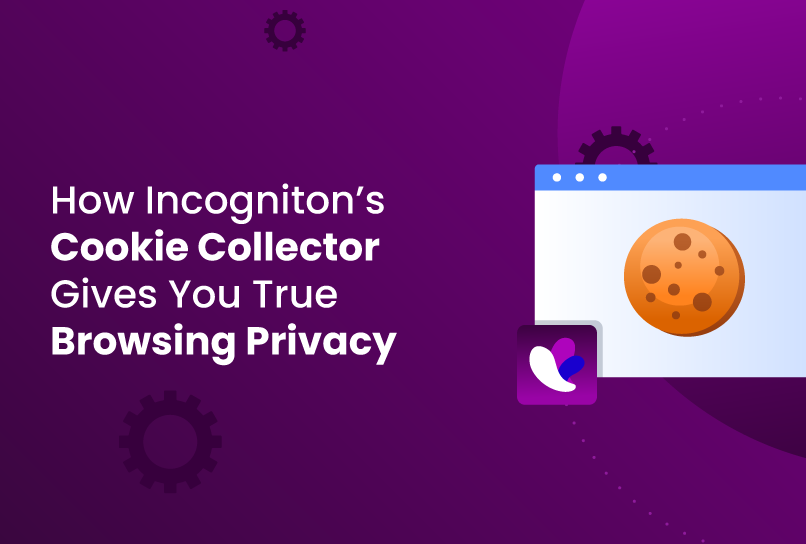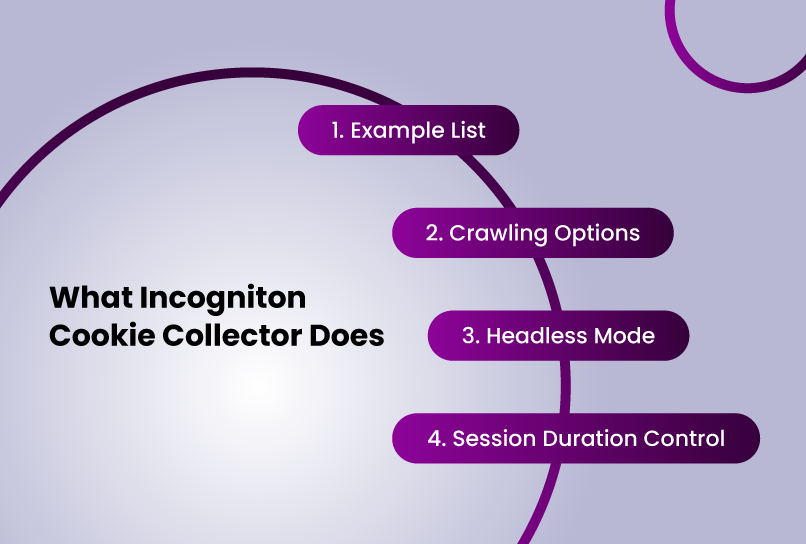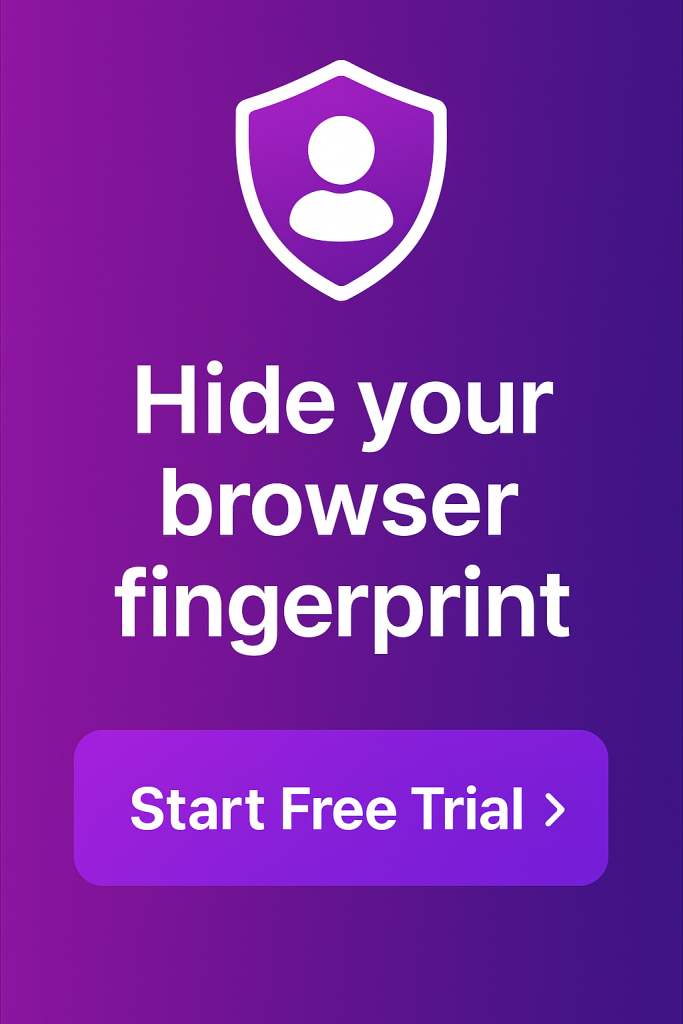For something so small, cookies hold immense power over how we experience the internet. These tiny bits of data, saved by your browser, were originally designed to make web browsing easier by remembering your logins, keeping items in your cart, and saving preferences. However, over the years, cookies have become one of the most widely exploited tools in online surveillance and behavioural tracking.
From targeted ads that follow you around the web to platforms that refuse to let you manage multiple accounts cleanly, cookies can quickly go from helpful to invasive. And while most browsers offer a few basic tools, like incognito mode or cookie-clearing options, these barely scratch the surface when it comes to true privacy control.
This is where Incogniton’s Cookie Collector stands out — letting users isolate, import, export, and clean cookies at a profile level. If you’re serious about protecting your online identity while maintaining multiple accounts, this article is a good place to start.
The Problem With Cookies: An Overview
In their simplest form, cookies are just data packets that a website stores on your browser. This can include your login status, items in a shopping cart, or site preferences like language or theme. These are known as first-party cookies, and they serve an important purpose in making browsing seamless.
But there’s a darker side: third-party cookies—often placed by ad networks and tracking services—monitor your behavior across multiple websites. These cookies build a profile of who you are, what you like, where you go online, and even what you might buy next.
Over time, that profile becomes extremely valuable to advertisers, data brokers, and platforms that want to keep you locked into their ecosystems.
Read More Here: The Different Types of Cookies and How to Convert Them
Unfortunately, traditional browsers don’t give you real control over cookies; they just offer basic cleanup options, often as an afterthought. Google Chrome, for instance, doesn’t adequately separate cookies across tabs or sessions.
Even if you create multiple profiles, they are still vulnerable to cross-profile contamination and fingerprinting. As a result, cookies often leak, allowing websites to piece together your activities across profiles.
This creates serious problems for:
- Privacy-focused users who want a clean, compartmentalized online life.
- Marketers or researchers who need to manage multiple logins to the same platforms.
- Businesses that work across different regions, accounts, or client identities.
In response to mounting pressure from regulators and privacy advocates, Google began phasing out third-party cookies in Chrome, the world’s most-used browser. As of 2024, the company is testing Privacy Sandbox, a framework that replaces cookies with a new tracking model based on cohort-based advertising and Topics API (translation: grouping users by interests instead of following them individually.)
While this signals a shift in surveillance tactics, it doesn’t eliminate tracking altogether, it just makes it less visible. Users still don’t have full control, and many platforms continue to rely on first-party cookies and browser fingerprinting to build user profiles behind the scenes.
Meanwhile, legislation like the General Data Protection Regulation (GDPR) has pushed for stronger user consent for cookies. But this has also led to “consent fatigue” — those “Accept all cookies” popups that most users blindly click. The reality is, even with these regulations, most users lack the technical ability or tools to truly manage or restrict cookies. That’s why browsers that give actual control, not just performative privacy, are becoming increasingly necessary.
Why Incognito Mode and VPNs Aren’t Enough
Many users try to “protect” themselves by going incognito or turning on a VPN. It’s a good instinct, but it falls short.
Incognito mode only ensures two things:
- The browser doesn’t save your browsing history after you close the window.
- The browser deletes cookies after the session ends.
During the session, cookies are still fully active—platforms can still track your behavior.
VPNs, on the other hand, mask your IP address. They can help with geo-restrictions or prevent your ISP from monitoring your activities. But again, cookies still operate as normal. If you’re logged into Google or Facebook while on a VPN, you’re still being tracked through cookies and fingerprinting. Changing your IP doesn’t matter if the browser fingerprint and the cookie remain the same.
These tools are useful for certain things, but they’re fundamentally passive. They don’t give you active control over what cookies are stored, how they’re used, or how they’re shared between sessions.
That’s where a solution like Incogniton makes a difference.
Incogniton’s Anti-Fingerprinting tech Offers True Profile-Based Browsing
Incogniton is built around a different philosophy. It is a specialized kind of browser built with privacy in mind. What that means is that instead of treating every browser tab as part of the same identity, it allows users to create isolated browser profiles, each with its own cookie storage and other attributes that form what is called a browser fingerprint.
So not only does Incogniton give you a comprehensive way to manage cookies, it helps you maintain your total digital privacy by making it difficult to track your browsing activities via browser fingerprinting.
Each profile is like a digital clone of a separate person using a separate machine. This is especially powerful for people who manage multiple accounts, run tests across regions, or want to split their personal, work, and side-project identities cleanly.
Within this system, cookies are stored per profile and never shared unless you choose to share them. That’s already a huge improvement over traditional browser behavior.
But Incogniton takes it a step further with its Cookie Collector feature — a tool that allows you to actively manage cookies on your terms.
What Incogniton Cookie Collector Does
The Cookie Collector is part of Incogniton’s broader suite of cookie management tools that give users full control over how browser profiles and browsing sessions are maintained.
With this tool in particular, you improve the reliability and credibility of your new browser profiles by pre-loading them with cookies that reflect typical user behavior.
This matters because many platforms, especially social media and ad networks, can detect when a profile is too “clean.” A browser environment with no cookies or history often stands out, making new logins more likely to be flagged for verification or blocked altogether. A profile with cookies, on the other hand, blends in.
Unlike traditional browsers that passively collect cookies while you browse, Incogniton’s Cookie Collector puts you in charge. You decide which websites to visit, how long to stay on them, and how the browser behaves during the session. This makes it especially useful for creating warm, trusted profiles for marketing, research, or account management.
Here are some of the things the Cookie collector can do:
1. Example List
The Cookie Collector includes a built-in list of popular websites that you can use as a starting point. Instead of manually entering URLs, you can choose from this predefined set to quickly gather cookies from reputable sources. It’s a time-saver — especially for new users — and it helps make your profile look more natural right from the start.
2. Crawling Options
To better simulate real human behavior, you can configure the Collector to randomly visit sites on the list and click on links during the session. This browsing activity generates a more diverse and realistic cookie set, making the profile appear more organic to detection systems and less likely to raise red flags.
3. Headless Mode
If you don’t want browser windows popping up while collecting cookies, you can enable Headless Mode. This allows the Collector to run in the background without opening a visible browser. It makes it ideal for users managing multiple profiles or running large-scale setups without interrupting their workflow.
4. Session Duration Control
You can also define how long the Cookie Collector runs for each session. Whether you want a quick, light browsing history or something more thorough, you can set the collection time in minutes. This helps shape the browsing footprint to fit your specific use case.
Conclusion
Most people think of cookies as annoying, especially because of those “pop-ups.” But in reality, they’re a foundational part of how your identity and your behavior are tracked online. And when you start using the internet across multiple accounts, clients, or use cases, managing cookies becomes less about convenience and more about survival.
Incogniton’s Cookie Collector gives users more than just a cookie jar; it offers complete control over how their digital sessions are stored, shared, and separated.
You don’t have to rely on band-aids like incognito mode or VPNs that only hide parts of your fingerprint. With Cookie Collector, you can own the full browsing environment, cookies and all.
If you care about privacy, operate in high-stakes digital spaces, or simply want to stop being followed around the web, this is the upgrade your browser experience needs. Try it and take back control one cookie at a time.
Frequently Asked Questions (FAQs)
How is Incogniton’s Cookie Collector different from regular cookie tools?
Incogniton’s Cookie Collector actively simulates browsing behavior to gather relevant cookies for a profile. It improves the efficiency of your operations because you don’t have to manually visit websites to get the cookies you need to make a new browser profile reliable and authentic from the get-go.
Can I import cookies from another browser into Incogniton?
Yes. Incogniton supports cookie import/export. You can import cookies in the JSON, Netscape, and base64 encoded versions of the previous two format types. You can also export cookies between browser profiles.
Do I need to keep the browser open to collect cookies?
No. Incogniton’s Cookie Collector supports headless mode, allowing it to run in the background without opening a visible browser window. It’s discreet and efficient.
What’s the difference between Cookie Collector and browser fingerprinting tools?
Cookie Collector focuses on building realistic browsing sessions by simulating cookie activity. Fingerprinting tools in Incogniton, on the other hand, modify how your browser appears (e.g., screen size, OS, fonts). Used together, they create a more authentic and undetectable digital identity.
Will using Cookie Collector trigger platform bans or security alerts?
No. In fact, that’s what it helps prevent. By simulating normal user behavior (e.g., visiting sites, clicking links), Cookie Collector builds a session that looks natural. This reduces the chances of platforms flagging your activity as suspicious or automated.
Can I run Cookie Collector on multiple profiles at once?
Yes. You can initiate cookie collection across several browser profiles simultaneously. Combined with headless mode, this allows for efficient batch setup without slowing down your main device.
Is Cookie Collector legal to use?
Yes, using Cookie Collector is legal. But how you use it matters. If you’re managing multiple accounts or testing web behavior for ethical, research, or marketing purposes, you’re fine. Misusing it to impersonate identities or violate platform’s terms of service could have consequences. As always, use it responsibly.
Anti-Detect Browser for Multi-Account Management
Manage unlimited virtual profiles for easy multi-account management. Safe and anonymous. Ideal for teams and individuals. Download and try for free now!



